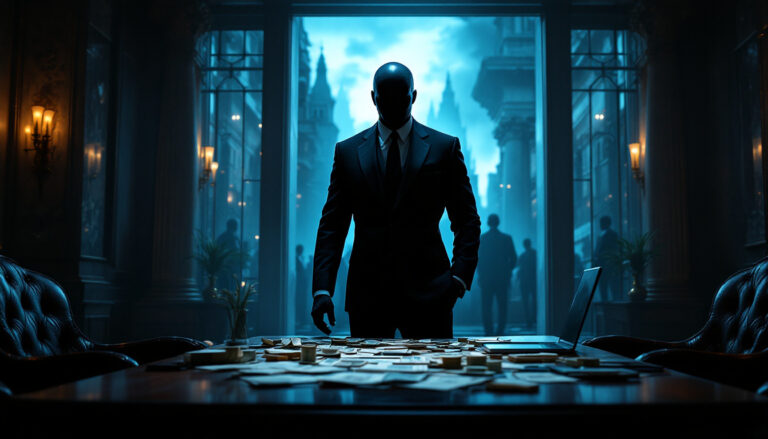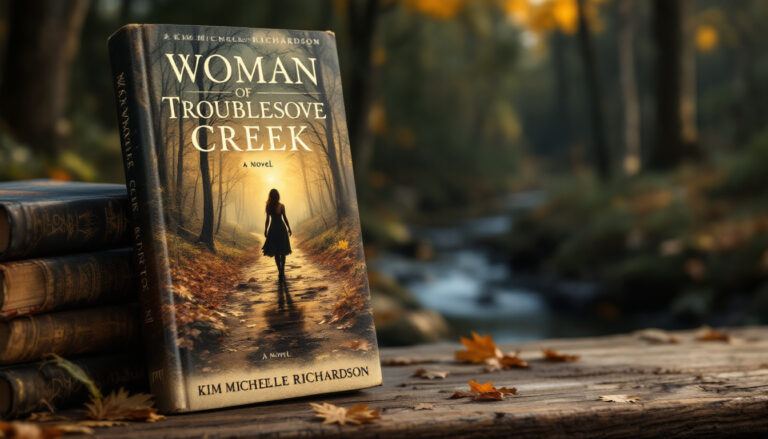Dragonfly in Amber by Diana Gabaldon Book Review – A Journey
Time bends, love endures, and history pulses with life in Diana Gabaldon’s Dragonfly in Amber. This second installment of the Outlander series sweeps readers between centuries, bridging Claire Randall’s modern-day struggles and her past in the tumultuous 18th century. Wrapped in vivid historical detail and emotional depth, the novel paints the perilous politics of the Jacobite uprising alongside the unbreakable bond between Claire and Jamie Fraser. Whether you’re drawn to romance, adventure, or the weight of impossible choices, this story promises a journey through love, loss, and the fascinating collision of two eras.
Overview of Dragonfly in Amber
Diana Gabaldon’s Dragonfly in Amber, the second book in the Outlander series, is an engrossing mix of historical fiction, time travel, romance, and personal sacrifice. The story alternates between Claire Randall’s life in the 1960s and the political tumult of 18th-century Scotland and France. At its heart, the book delves deeply into themes of loyalty, love, and the weight of altering history as Claire and Jamie Fraser navigate the harrowing events tied to the Jacobite rising of 1745. With vivid descriptions and complex character dynamics, this novel expands on its predecessor, balancing personal drama with historical stakes. Below, we explore its central elements.
Plot Summary
Dragonfly in Amber opens in 1968, twenty years after Claire returned to her original timeline. This structure immediately sets it apart, as we see Claire travel with her daughter, Brianna, to Scotland. Introduced as an adult in this book, Brianna marks a pivotal shift in Claire’s life and the story—a bridge between the past and present. As Claire recounts her experiences, the story dives into the 18th century, a time when she, alongside her Highland warrior husband Jamie, attempts to rewrite the future by influencing political events leading up to the Jacobite rebellion.
Key plot points include Claire and Jamie’s time in the French court, where intricate schemes, espionage, and power games unfold. They encounter allies and adversaries, from the enigmatic Comte St. Germain to the rebirth of their old enemy, Jack Randall. Simultaneously, Claire’s mid-20th century reflections bring a slower, introspective contrast, where her story and uncovering history’s impact reveal unanswered questions.
The novel delivers historical immersion by weaving real events, like Bonnie Prince Charlie’s campaign, with vivid emotional conflicts. It’s a narrative that balances action with its quieter emotional depth. However, details are carefully constructed to avoid revealing major spoilers for readers experiencing this journey for the first time.
For more insight into the novel, websites like Goodreads provide thoughtful reviews and reader opinions.
Themes and Narrative Style
Gabaldon’s story grapples with several powerful themes that resonate with readers. Love is a dominant force—both romantic love between Claire and Jamie and the maternal bond that shapes Claire’s motivations. The theme of loss is intricately woven, mirrored in the historical tragedies of the Jacobite rising and the personal sacrifices characters endure. Beyond this, Dragonfly in Amber examines fate versus free will. Claire’s knowledge of future historical outcomes clashes with Jamie’s determination to make meaningful changes, introducing moral complexities to their decisions.
Another central focus is historical responsibility, questioning the ethical dilemma of interfering with the past. Is it worth saving lives at the cost of altering the broader course of history? Such reflections add depth to the narrative, aligning with the introspection Claire undergoes while bridging the timelines.
Gabaldon masterfully shifts the narrative perspective, alternating between first-person (through Claire’s eyes) and third-person omniscience. These shifts not only provide a layered understanding of the story but also highlight the challenges of juggling multiple timelines and contrasting views. Readers experience Claire’s deeply personal accounts of her time-traveling journey alongside wider historical contexts, making the narrative dynamic and engaging.
The novel’s ability to marry personal drama with rich historical detail is one of its standout qualities. For fans looking for a closer breakdown of these themes, sources like The Geeky Bibliophile explore Gabaldon’s intricate writing style and powerful character arcs in-depth.
This dual-timeline masterpiece is a thought-provoking continuation of the Outlander saga, inviting readers to question how far they would go to protect love—be it their own or the life they’ve brought into the world.
Deep Dive into Characters
Diana Gabaldon’s Dragonfly in Amber thrives on its rich, multidimensional characters whose personal growth weaves seamlessly into the larger historical narrative. These characters are not mere placeholders in the storyline—they are the heartbeat of this tale of love, sacrifice, and the tension between destiny and choice. From the resolute Claire Randall to the steadfast Jamie Fraser and the unforgettable supporting cast, the novel’s characters resonate with readers, keeping them emotionally invested throughout.
Claire Randall: Her Struggle and Strength as a Time Traveler
Claire Randall is the anchor of this incredible story. As a 20th-century woman navigating the societal constraints and perils of the 18th century, her grit and intelligence are nothing short of extraordinary. Tasked with impossibly high stakes in history—altering the course of the doomed Jacobite rising—Claire’s internal struggle is palpable. How does a person carry the burden of knowing too much while being powerless to stop certain events?
Her time-traveling journey is not just about living in a different period. It forces Claire to confront her identity, values, and the limits of her influence. Her unwavering love for Jamie and her instinct as a healer make her a dynamic force in the narrative. Claire doesn’t just float through events; she challenges them. Whether it’s navigating the dangerous terrain of French court politics or performing life-saving medical interventions with primitive tools, she’s driven by steady resolve.
To gain a deeper insight into her complexity, Outlander Wiki provides more context on pivotal moments from the second book in the series.
Jamie Fraser: Leadership, Growth, and Love
Jamie Fraser’s journey in Dragonfly in Amber is about more than leadership; it’s about stepping into the role of a protector, strategist, and partner. As readers, we see Jamie transition from a Highland warrior into a man grappling with the weight of responsibility—not just for his clan or Scotland, but also for Claire and their unborn future as a family.
Jamie embodies the spirit of honor, even when his choices demand unthinkable sacrifices. His ability to negotiate, charm, and lead in the face of mounting political chaos makes him a pillar of strength. Yet, his humanity shines through his relationship with Claire. Their love is built not on perfection but on understanding, mutual respect, and forgiveness.
The layers of vulnerability and fortitude in Jamie’s character make him stand out, as seen when he faces rivals and allies alike at the French court. If you’re curious about how Jamie’s strategies impact the Jacobite cause, Outlander Wiki dives into detailed aspects of his character evolution.
Supporting Characters: Vital Threads in the Narrative
While Claire and Jamie dominate the spotlight, the supporting characters are equally crucial in shaping this tale. Brianna, Claire’s fiercely independent daughter, makes a strong impression despite her relatively limited screen time. As the bridge between two timelines, Brianna represents both connection and conflict—a modern woman coming to terms with her mother’s extraordinary story.
The historical figures woven into the narrative, like Bonnie Prince Charlie, amplify the stakes of the story. Prince Charlie’s charisma and naivety are a study in contrasts, portraying both the hope of a nation and its inevitable downfall. His interactions with Claire and Jamie offer sharp insights into their larger quest to influence history.
Others, like the enigmatic Comte St. Germain or the loyal Murtagh, inject intrigue and emotion into the plot. Murtagh, in particular, remains a fan-favorite for his steadfast loyalty and surprising moments of vulnerability. If you’re keen to explore the depth of these characters, check out the character overview here.
In essence, Dragonfly in Amber achieves its emotional depth by presenting characters who feel real and flawed. Whether it’s enduring love, personal ambition, or the need for redemption, the characters pull readers into their world, making every twist and turn in the narrative resonate on a deeply human level.
Historical and Cultural Insights
Diana Gabaldon’s Dragonfly in Amber is more than just a time-travel novel. It’s a tapestry of historical accuracy and rich cultural detail that brings the 18th century to life. Through vivid storytelling, Gabaldon immerses readers in the political turmoil of the Jacobite rising while also highlighting day-to-day life and social dynamics in both Scotland and France. This section explores two intricate aspects of the book: the undercurrent of political intrigue and the deep cultural context woven into the narrative.
The Jacobite Rising and Political Intrigue
At the heart of Dragonfly in Amber lies the Jacobite rising of 1745—a desperate attempt by Charles Edward Stuart, famously known as Bonnie Prince Charlie, to reclaim the British throne for his father. Gabaldon plunges readers into this turbulent time, using Claire and Jamie’s efforts to prevent the uprising as an avenue to explore its political stakes. With Claire’s foresight of impending failure and Jamie’s resolve to protect his clan from ruin, the book constructs a delicate balance between historical inevitability and personal sacrifice.
The chapters set in the French court under King Louis XV are rife with deception and plotting. Jamie and Claire navigate a minefield of alliances, presenting the reader with a behind-the-scenes look at the politics of an era defined by trust and betrayal. From secret meetings with Prince Charlie to tense encounters with the enigmatic Comte St. Germain, the narrative pulses with intensity. These scenes illuminate the intricate dynamics of power—how alliances are made, loyalty is tested, and long-term plans crumble under human ego.
Claire’s knowledge of the future continually tests the possibility of altering history. Can they stop the Jacobite cause from advancing toward its tragic end at the Battle of Culloden? Gabrielle’s portrayal of the characters’ tug-of-war with time and destiny is as gut-wrenching as it’s enlightening. If you’re curious about the historical backdrop of the Jacobite rising, learn more through resources like Outlander Wiki.
Cultural and Social Context
Beyond politics, Dragonfly in Amber offers a window into everyday life in 18th-century Scotland and France. Medical practices, societal norms, and the juxtaposition of Claire’s modern sensibilities against historical realities create a unique blend of tension and fascination. In this era, medicine depends on rudimentary tools, making Claire’s 20th-century medical knowledge feel almost like witchcraft. This skill repeatedly becomes her lifeline but also places her in precarious positions, blurring lines between healing and harm in the eyes of an uneducated populace.
Social customs are painted with meticulous care. The book takes us into French salons, where powdered wigs, opulent gowns, and scintillating gossip dominate social gatherings. Conversely, in Scotland, the simpler yet more rugged life of the Highlanders comes alive. Through precise detail, Gabaldon doesn’t just describe cultural differences—she makes readers feel them. For example, while the French court revels in excess, the Scottish characters embody resilience, adapting to trials with a grace born of necessity.
Religious influences also play an understated but significant role, reflecting the era’s moral compass and societal expectations. For instance, women’s roles are bound by strict traditions, which Claire frequently challenges, creating memorable conflicts. Similarly, the stark contrasts between wealth and poverty, power and subjugation, highlight the sharp divide between the ruling elite and the common folk of the time.
If you want to dive deeper into the level of historical and social accuracy that Gabaldon brings to her work, resources like Blinkist dissect details about how 18th-century life is masterfully depicted in the book.
Through her seamless interweaving of history and culture, Gabaldon crafts a story where the past is not a backdrop but a living, breathing element of the characters’ journey. Each page pulses with the realities of a time where survival required both grit and grace.
Comparisons to the First Book and the Television Adaptation
While Dragonfly in Amber builds on the foundation laid by Outlander, it offers a fresh shift in pacing, tone, and narrative complexity that sets it apart. This section explores how the novel transitions from its predecessor and examines the discrepancies between its written form and its television adaptation.
Continuation of Narrative from ‘Outlander’
Diana Gabaldon’s Dragonfly in Amber takes readers on a more intricate journey, advancing the themes and character arcs introduced in Outlander. While the first book focuses heavily on the romance and adventure in Claire and Jamie’s burgeoning relationship, Dragonfly in Amber expands its scope to explore deeper political intrigue and historical stakes.
For one, this sequel steps into a dual timeline, contrasting the bustling 1960s with the volatile 18th century. The introduction of Brianna—a central character we first meet as an adult—and Roger Wakefield sets a reflective tone. It invokes the idea of legacy and unanswered questions from the past. Much of the book dwells on the weight of those decades-long repercussions created by Claire’s journey to and back from the 18th century.
The historical aspect ramps up, as Jamie and Claire infiltrate the French court, attempting to alter the course of the Jacobite rising. This is a definitive change from the first book, as Dragonfly in Amber prioritizes strategizing, political maneuvering, and the inevitability of history over the survivalist drama that drove Outlander. The stakes of their mission—preventing the doomed uprising—infuse the story with a sense of urgency and heartbreak.
Claire, now more confident in handling her split identity as a time traveler, contrasts sharply from her earlier hesitance in Outlander. Meanwhile, Jamie grows into an even more multifaceted character, balancing his duty toward a greater cause with his personal loyalty to Claire. Together, their increasing political involvement and moral dilemmas explore how far love and loyalty can stretch without breaking. For a closer look at the evolution of the characters and tone in this installment, this review dives into notable transitions from Outlander to its sequel.
Television Adaptation
The television adaptation of Dragonfly in Amber, which spans the second season of Outlander, brings its own unique flavor to Gabaldon’s intricate tale. While the core storyline remains intact, there are significant differences in how the story unfolds across the screen versus the page.
1. Pacing Adjustments:
Where the book takes its time fleshing out intricate details of court life, political schemes, and personal conflicts, the TV series condenses these arcs for screen-readability. For instance, Jamie and Claire’s time in France feels shorter in the series, accelerating the transition to Scotland and the impending rebellion. Though effective for episodic storytelling, these changes can leave viewers missing out on the slow-burn build-up of espionage and alliances found in the book. Insights like these can be found in comparisons on The Urban Outlander.
2. Tone and Emotional Depth:
The shift in tone between book and show is noteworthy. The novel’s bittersweet, reflective narrative—particularly in its modern-day framing involving Claire’s return to Scotland—feels more meditative compared to the fast pace of the TV adaptation. Claire’s memories and emotional complexities, key elements of the written story, are sometimes sidelined for more immediate, visual drama in the series.
3. Character Portrayal:
Perhaps the most noticeable distinctions lie in character development. Jamie’s portrayal in the television series heightens his outward heroism, emphasizing action over introspection. Similarly, Claire’s moments of vulnerability are sometimes overshadowed by the need to keep the plot moving, which can detract from her internal struggle as a time traveler grappling with destiny and loss.
Adaptations can also simplify or omit characters and scenes to keep the narrative concise. For example, some significant side characters or subplots from the book are downplayed or entirely excluded in the TV version. This creates a streamlined story for viewers, though it may feel like gaps exist for those who’ve read the source material. For a comprehensive analysis of changes like these, this resource highlights seven major differences between the show and books.
Ultimately, both the novel and its adaptation capture the spirit of Claire and Jamie’s story, but they deliver it in their own distinct ways. Whether you’re a fan of the page-turner or the episode marathon, Dragonfly in Amber offers an emotional and historical ride that leaves a lasting impact.
Strengths and Weaknesses of the Book
Diana Gabaldon’s Dragonfly in Amber is both an enchanting journey through time and an ambitious exploration of human and historical intricacies. With that, it comes with its share of admirable strengths and thoughtful critiques. Let’s explore the key aspects—both the triumphs and the challenges—of this Outlander sequel.
Strengths: Rich Historical Detail, Character Development, and Emotional Depth
One of the most commendable features of Dragonfly in Amber lies in Diana Gabaldon’s meticulous attention to historical detail. Every page feels like a portal to the past, immersing readers in 18th-century Scotland and France. From the opulence of French court life under King Louis XV to the harsh resilience of Highland traditions, Gabaldon paints a world so vivid you can almost hear the murmur of political intrigue and the echoes of bagpipes in the distance. It’s history brought to life—not as a backdrop, but as a living, breathing element of the story. Historical fiction fans will appreciate the depth and texture of her research as seen in resources like The Geeky Bibliophile, which highlights the novel’s layered historical setting.
Character development is another standout strength. Claire Randall is as layered and tenacious as ever, grappling with the moral complexities of preventing a rebellion while navigating her dual existence across centuries. Her resolve as a mother, wife, and healer makes her an enduring anchor of the series. Meanwhile, Jamie Fraser’s transformation into a leader and strategist showcases the unrelenting weight of his responsibilities. Gabaldon’s ability to depict raw human emotion—be it love, betrayal, or grief—ensures that readers not only root for her characters but also feel their triumphs and losses.
Lastly, Dragonfly in Amber excels in emotional resonance. The way Gabaldon portrays love, loss, and sacrifice tugs at the heartstrings, leaving readers reflecting on the fragility of time and life itself. The dual timeline of Claire’s present and past keeps the emotional stakes high, reinforcing the question: how far would you go to protect what you hold dearest? As noted in this review, the book’s emotional grip lingers long after the final page, making it a favorite for many fans.
Weaknesses: Slow Pacing and Overly Intricate Plotlines
Despite its significant strengths, some areas of Dragonfly in Amber may prove challenging for readers. Chief among them is its slow pacing. Gabaldon’s dedication to detailing politics, personal interactions, and complex relationships sometimes meanders, leaving readers sifting through extended setups before reaching key moments of action. For those seeking a fast-paced narrative, this installment may feel like trudging through mud. As readers on platforms like Reddit have noted, the book’s occasional sluggishness is hard to ignore, even if it serves the larger story.
Another potential hurdle is the intricacy of the plotlines. Gabaldon’s storytelling ambitiously combines time travel, historical events, and personal drama, weaving them into a rich tapestry of interwoven fates and conflicts. However, at points, it can feel overwhelming. Juggling alliances, betrayals, and the web of French court politics may deter some readers who struggle to keep up. This review emphasizes how the heavy plot layers, while rewarding, demand patience and attention to detail.
Lastly, the length of the novel itself may deter casual readers. At over 900 pages, some argue that the book is occasionally burdened by its own ambition, with chapters that could have been condensed for greater impact. While admirers of detailed storytelling see this as part of Gabaldon’s charm, others might find it distracts from the book’s core themes.
In summary, Dragonfly in Amber offers a mesmerizing, albeit sometimes slow, journey that readers can’t easily forget. Its historical richness and emotional weight make it a worthy sequel, though its pacing and complexity might deter those unprepared for a densely woven tale. For an in-depth review addressing both sides of the coin, visit The StoryGraph.
Conclusion
Diana Gabaldon’s Dragonfly in Amber is a remarkable blend of history, romance, and the kind of storytelling that lingers in the heart long after the final page. It invites readers to ponder the weight of love and sacrifice against the relentless pull of history. Claire and Jamie’s story is not only about rewriting the past but also about finding strength in connection, even when the odds are stacked against them.
For lovers of historical fiction rich with emotional depth and vivid detail, this novel offers a deeply immersive experience. It’s ideal for readers seeking narratives that challenge the boundaries of time and explore the complexities of human relationships.
If you’ve read Outlander or are just stepping into this series, Dragonfly in Amber is a worthy follow-up that perfectly balances personal drama with historical gravitas. Share your thoughts or reflections on this installment, and let its timeless themes spark conversations about life, love, and the choices that define us.







